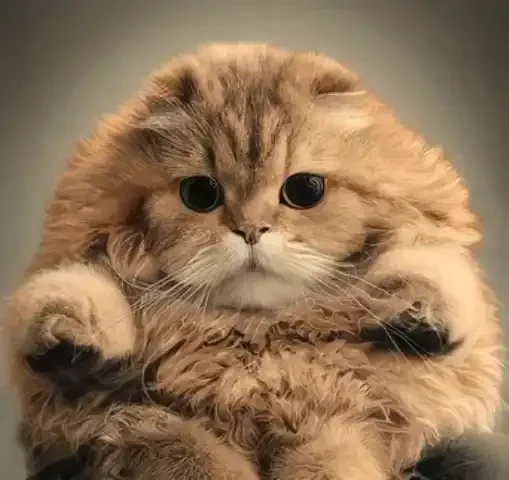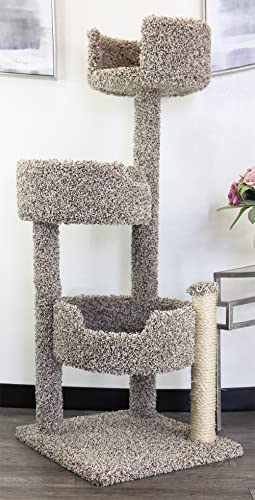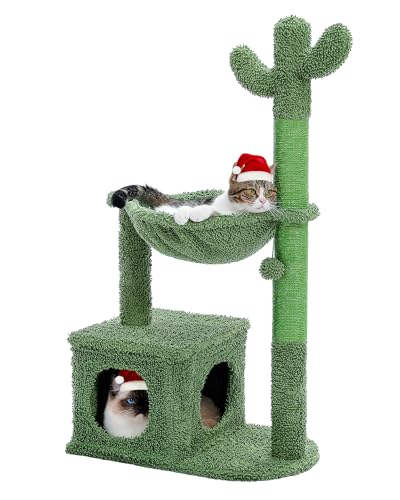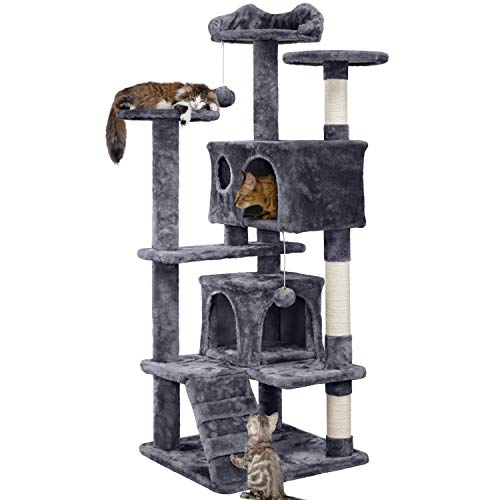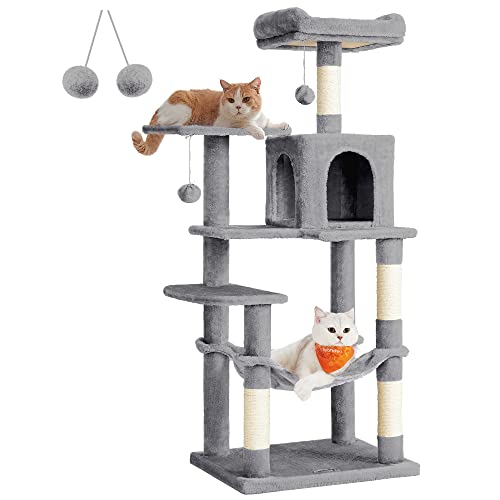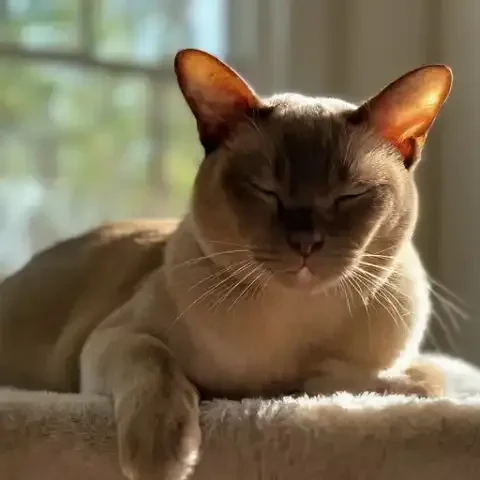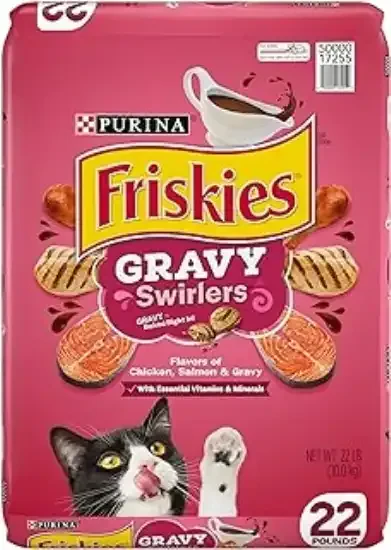From sleek and vocal to fluffy and serene, the world of cat breeds is incredibly diverse, a captivating tapestry woven with unique personalities, striking appearances, and fascinating histories. For those considering welcoming a feline friend into their lives, the sheer variety can be both exciting and overwhelming. Where do you begin to navigate this wonderful world of purrs and whiskers? Thinking about opening your heart and home to a cat? Prepare to be amazed! Each breed boasts its own distinct blend of temperament, physical traits, and care requirements, ensuring that there's a purrfect feline companion out there to suit almost every lifestyle and personal preference. But with so many enchanting options, understanding the different breeds and their defining characteristics is the first step in finding your ideal match. In this article, we’ll embark on a journey through the captivating realm of popular cat breeds, introducing you to some of the most well-loved and sought-after felines gracing homes around the globe. We’ll offer a glimpse into their key traits, highlighting what makes each breed special and appealing, helping you begin to explore the exciting possibilities as you consider adding a cat to your family. It’s important to remember that choosing a cat breed is a deeply personal decision. Your lifestyle, home environment, and personal preferences all play crucial roles in finding the right feline companion. Whether you're drawn to an active, playful cat or a calm, lap-loving one, understanding breed-specific traits can significantly enhance your chances of a harmonious and joyful long-term relationship. As you explore these popular breeds, remember to consider responsible sourcing – whether that means seeking out a reputable breeder dedicated to breed health and temperament, or opening your heart and home to a deserving cat through adoption. Join us as we delve into the fascinating world of cat breeds, spotlighting some of the most popular and captivating personalities you should know about. We’ll explore breeds like the majestic Maine Coon, the affectionate Ragdoll, the talkative Siamese, the glamorous Persian, the charming British Shorthair, the strikingly wild Bengal, the energetic Abyssinian, the unique Sphynx, the lucky Japanese Bobtail, and the classic American Shorthair – each a testament to the incredible diversity and enduring charm of the feline world.
Imagine a cat the size of a small dog, a magnificent creature with a luxurious, flowing coat that shimmers with every movement, yet possessing a heart as gentle as a lamb. This is the Maine Coon, often affectionately referred to as the "gentle giant" of the feline world. These majestic cats are truly impressive in size, boasting a long, muscular body and a substantial build that makes them one of the largest domestic cat breeds. Their coat is a defining feature, a luxurious, shaggy, semi-longhaired masterpiece designed to withstand harsh climates. Water-resistant and wonderfully thick, it provides both warmth and protection, flowing gracefully around their powerful frame. A bushy tail, often as long as their body, adds to their imposing presence, while tufted ears and paws contribute to their wild, ruggedly handsome appearance. Maine Coons come in a breathtaking array of coat colors and patterns, but the classic brown tabby is perhaps the most iconic, evoking images of their supposed ancestral link to the Maine woods. Despite their imposing size and somewhat wild appearance, the Maine Coon is renowned for its gentle and good-natured temperament. The “gentle giant” moniker is truly apt; they are known for being remarkably patient, tolerant, and affectionate cats, rarely exhibiting aggression. While playful and engaging, they are not overly demanding of attention, content to lounge nearby and observe family life, participating when the mood strikes. Their intelligence shines through in their trainability, often likened to dogs in their eagerness to learn commands and even enjoy leash walking. Maine Coons are known to be wonderful family pets, typically getting along famously with children and other animals, their gentle nature making them a safe and reliable companion for households of all kinds. Caring for a Maine Coon requires acknowledging their magnificent coat. Regular grooming is essential, primarily brushing several times a week to prevent matting and tangles in their thick fur. While they are moderately active, their exercise needs are manageable, enjoying playtime but not requiring excessive exertion.
Known for their almost unbelievably docile and affectionate nature, Ragdolls are truly the epitome of the “lap cat.” These large, semi-longhaired beauties are famous for their tendency to go completely limp and floppy when held, a characteristic that earned them their endearing name. Ragdolls are substantial cats, boasting a cobby and muscular build beneath their luxurious coats. Their fur is semi-longhaired, incredibly silky and plush, often described as having a rabbit-like texture – a delight to touch and cuddle. Their striking blue eyes are a defining feature, piercingly bright and expressive, enhancing their gentle and trusting gaze. Ragdolls exhibit a pointed coat pattern, similar to Siamese, with lighter bodies and darker points on their face, ears, paws, and tail. The color variations within the points add to their visual appeal, ranging from seal and blue to chocolate and lilac, among others. Personality-wise, Ragdolls are renowned for their exceptionally affectionate and docile temperament. Often described as "puppy-like" in their devotion, they are intensely people-oriented cats who crave human companionship and attention above all else. Gentle and laid-back, they are incredibly tolerant and patient, rarely displaying aggression or demanding behaviors. Ragdolls thrive on human interaction, relishing cuddle sessions, lap time, and simply being near their beloved owners. Their gentle nature extends to children and other pets, typically coexisting peacefully and affectionately in multi-pet households. Caring for a Ragdoll does involve regular grooming to maintain their beautiful semi-long coat. Brushing several times a week is necessary to prevent matting and tangles and to minimize shedding. While moderately playful, their exercise needs are not overly demanding, enjoying gentle play sessions but primarily content to relax and cuddle. Due to their docile and trusting nature, Ragdolls are ideally suited to indoor living, where they are protected from outdoor dangers.
Strikingly beautiful with their sleek, elegant bodies and piercing blue, almond-shaped eyes, Siamese cats are instantly recognizable and globally admired. More than just their captivating looks, Siamese are renowned for their intelligence, their elegant demeanor, and, of course, their distinctive and often quite insistent vocalizations. These are slender, graceful cats with an oriental body style, characterized by long lines, a wedge-shaped head, and large, pointed ears that accentuate their alert and refined appearance. Their eyes, a deep, sapphire blue and almond-shaped, are intensely expressive, reflecting their sharp intelligence and curious nature. The Siamese coat is short, fine, and close-lying, requiring minimal grooming, and exhibits the classic pointed coat pattern – lighter bodies with darker points on their face, ears, paws, and tail. Traditional Siamese points are seal brown, but color variations abound, including chocolate, blue, and lilac, among many others. Personality-wise, Siamese cats are exceptionally intelligent, curious, and undeniably demanding of attention. They are known for being highly vocal and communicative, often described as “conversational,” using a wide range of meows, chirps, and calls to “talk” to their owners. Their “Siamese talk” can be quite distinctive, sometimes loud and insistent, reflecting their strong desire for interaction. Affectionate and intensely loyal to their families, Siamese cats bond deeply with their chosen humans and can be quite possessive of their attention. They are playful and active cats, enjoying games and interaction, and their sharp minds thrive on mental stimulation. Caring for a Siamese is relatively low-maintenance in terms of grooming due to their short coat, but their high energy levels and intense need for mental stimulation and social interaction require dedicated owners. Providing ample playtime, puzzle toys, and consistent attention is crucial for keeping a Siamese happy and well-adjusted.
Synonymous with feline glamour and luxurious elegance, the Persian cat is a breed that immediately evokes images of royalty and pampered refinement. Renowned for their long, flowing, and undeniably magnificent coats, their sweet, gentle faces, and their placid, serenely calm demeanor, Persians are the embodiment of feline sophistication. The Persian's coat is, without question, their most defining feature – a long, luxurious, flowing masterpiece that requires dedicated daily grooming to maintain its pristine beauty. Their faces are round and sweet, often described as "pansy-like," with large, round, expressive eyes that gaze out with gentle curiosity. The nose of a Persian can vary depending on breed type, ranging from the more traditional, slightly longer nose to the increasingly popular “peke-faced” Persians with their extremely short, flat noses. Their body type is cobby, sturdy, and low to the ground, conveying a sense of quiet stability and gentle robustness beneath all that flowing fur. Persians come in an extensive variety of coat colors, encompassing solids, bi-colors, pointed patterns, and many more, offering a breathtaking spectrum of visual options. Temperamentally, Persians are known for their sweet, gentle, and docile natures. They are calm and quiet cats, not prone to excessive activity or boisterous play. Affectionate but not demanding, they enjoy being pampered and cherished, content to lounge gracefully in comfortable spots and receive gentle attention. They thrive in calm and predictable environments, preferring serenity over chaotic activity. Caring for a Persian cat is a significant commitment, primarily due to their high grooming needs. Daily brushing is absolutely essential to prevent matting and tangles in their long, flowing coat. Regular bathing may also be necessary to maintain coat cleanliness and manage shedding. Persians are ideally suited to indoor living, where their delicate coats are protected from the elements and their calm demeanor can be best appreciated. Potential owners should also be aware that Persians can be predisposed to certain breed-specific health issues, necessitating responsible sourcing from reputable breeders and consistent veterinary care.
With their round, endearing faces, plush, dense coats, and calm, easygoing personalities, British Shorthairs are often affectionately likened to “teddy bears” come to life. These are sturdy, well-built cats, possessing a medium to large body type that conveys a sense of quiet robustness. Their faces are wonderfully round, with full cheeks that contribute to their teddy bear-like appeal, and their eyes are large, round, and wide-set, often exhibiting a warm, golden hue that complements their coat colors. The coat of the British Shorthair is a defining feature – short, dense, and incredibly plush, often described as “crisp” or “dense” to the touch, standing slightly away from the body and offering a wonderfully soft and springy texture. While British Shorthairs come in a variety of coat colors and patterns, the iconic blue (grey) British Shorthair is perhaps the most recognizable and beloved, instantly evoking images of classic feline charm. Temperamentally, British Shorthairs are renowned for their calm, gentle, and easygoing natures. They are adaptable cats, content to observe family life without demanding constant attention or interaction. Independent yet affectionate, they enjoy being near their owners and will readily accept petting and gentle play, but are not overly clingy or prone to separation anxiety. Playful but not hyperactive, they appreciate a good play session but are equally content to relax and lounge comfortably. British Shorthairs are known to be adaptable to various lifestyles and home environments, making them wonderful companions for a wide range of owners. Caring for a British Shorthair is relatively straightforward. Their short, dense coat requires moderate grooming, primarily weekly brushing to remove loose hair and maintain its plush texture. Their exercise needs are also moderate, enjoying playtime but not requiring excessive activity.
Bring a touch of the exotic and untamed into your home with the Bengal cat, a breed instantly recognized and admired for its strikingly patterned coat reminiscent of a miniature leopard or jungle cat. Bengals are truly feline works of art, renowned for their wild beauty and energetic, intelligent personalities. Their body type is medium to large, muscular and athletic, reflecting their hybrid ancestry (a deliberate cross between domestic cats and the Asian Leopard Cat). Their coat is their most defining feature – exhibiting distinctive spotted or marbled patterns that mimic the wild cats of the jungle. Often, their coats possess a unique “glittered” or “pelted” texture, catching the light and adding to their overall luminous appearance. Bengal eyes are large and expressive, with color varying depending on coat pattern and color, often exhibiting striking shades of gold, green, or copper. Personality-wise, Bengals are highly active, energetic, and intensely playful. They are not cats to be ignored; they demand attention and interaction, thriving on activity and engagement. Their intelligence is undeniable, making them quick learners and often quite mischievous, capable of figuring out complex puzzles and sometimes even opening doors or cabinets. Confident and often demanding, Bengals are not shy about expressing their needs and desires, and can be quite vocal, using a range of meows, chirps, and calls to communicate. Caring for a Bengal requires understanding their high energy levels. Ample playtime, interactive toys, and climbing structures are essential to channel their boundless energy and keep them entertained and well-behaved. Grooming their short coat is minimal, but their need for mental and physical stimulation is significant, sometimes requiring a more experienced cat owner who can dedicate the time and energy to meet their needs.
Often likened to a miniature cougar in appearance and grace, the Abyssinian is a striking breed known for its uniquely ticked coat, elegant physique, and incredibly active and intelligent personality. These are cats that exude a sense of wild beauty and boundless energy, captivating all who encounter them. The Abyssinian body type is medium-sized, lithe, and muscular, exhibiting a foreign body style characterized by long lines, a slender yet muscular build, and an overall graceful appearance. Their coat is short, fine, and close-lying, requiring minimal grooming, but it is the ticked pattern that truly defines their appearance. The Abyssinian coat exhibits an agouti pattern, meaning each individual hair shaft has bands of color, creating a subtly shaded and richly textured coat that shimmers with movement. Their eyes are large, expressive, and almond-shaped, typically ranging in color from gold to green or copper, enhancing their alert and intelligent gaze. Large, pointed ears further contribute to their wild, attentive expression. Temperamentally, Abyssinians are exceptionally intelligent, curious, and intensely active. They are cats who live life at full speed, constantly exploring, playing, and investigating their surroundings. Playful and energetic to the extreme, they require ample opportunities for physical and mental stimulation to keep them happy and well-behaved. Affectionate and people-oriented, they enjoy human company and will readily interact with their families, though they can also be independent at times, content to explore and entertain themselves. They are often vocal and communicative, using chirps, trills, and soft meows to engage with their owners. Caring for an Abyssinian is relatively low-maintenance in terms of grooming due to their short coat, but their high energy levels and intense need for mental stimulation require dedicated owners who can provide ample playtime, interactive toys, and consistent attention.
Prepare for a truly unique and often surprisingly endearing feline experience with the Sphynx cat, a breed instantly recognized, and often polarizing, for its almost entirely hairless appearance and surprisingly warm, suede-like skin. Sphynx cats challenge conventional notions of feline beauty, captivating with their distinctive and undeniably intriguing aesthetic. Their most defining feature is, of course, their lack of fur. Instead of a traditional coat, Sphynx cats are covered in a fine, downy fuzz that gives their skin a suede-like texture, warm and soft to the touch. Their skin is often wrinkled, particularly around the face, shoulders, and paws, adding to their unique and somewhat otherworldly appearance. Their ears are large and prominent, often described as bat-like, further accentuating their distinctive head shape. Sphynx eyes are large, expressive, and lemon-shaped, often appearing particularly striking against their hairless skin. Beneath their unusual exterior lies a muscular and athletic body type, conveying a sense of surprising strength and agility. Personality-wise, Sphynx cats are exceptionally affectionate, social, and intensely people-oriented. They are often described as “dog-like” in their devotion, craving human companionship and attention above all else. Playful and energetic, they enjoy games and interaction, readily engaging with their families and often exhibiting a mischievous and clownish sense of humor. Intelligent and curious, they are quick learners and enjoy exploring their surroundings. Caring for a Sphynx cat requires understanding their unique needs due to their lack of fur. Skin care is essential, including regular bathing to remove skin oils and prevent skin issues. They are also sensitive to temperature extremes, requiring protection from both cold and intense sun, ideally suited to indoor living. Despite their somewhat unconventional appearance, Sphynx cats are known for their warm hearts and deeply affectionate personalities, offering a truly unique and rewarding feline companionship experience.
Known as the “lucky cat” in Japanese culture, the Japanese Bobtail is instantly recognized and beloved for its naturally bobbed tail and delightfully playful personality. These are cats that embody good fortune in more ways than one, offering a unique blend of charm, intelligence, and affectionate companionship. The Japanese Bobtail's most defining feature, the naturally bobbed tail, is a genetic marvel and a hallmark of the breed. No two bobtails are exactly alike, ranging in shape and length, adding to their individual charm. Their body type is balanced and muscular, conveying a sense of athleticism and agility. Their head is triangular and finely chiseled, framing their large, expressive eyes that convey alertness and intelligence. Their coat is short to medium, silky to the touch, and comes in a wide variety of colors and patterns, with the Mi-Ke (tri-color calico – red, black, and white) being particularly prized and culturally significant. Personality-wise, Japanese Bobtails are playful and energetic, maintaining a kitten-like enthusiasm for play throughout their lives. Intelligent and trainable, they are quick learners and enjoy puzzle toys and interactive games. Vocal and communicative, they use soft, melodious sounds to “talk” to their owners, creating a charming and engaging dialogue. Affectionate and devoted to their families, they form strong bonds with their human companions and are known to be good with children and other pets. Caring for a Japanese Bobtail is relatively straightforward. Their minimal grooming needs due to their short coat make them low-maintenance in that regard. They have moderate to high exercise needs, benefiting from ample playtime and mental stimulation. Generally a healthy and robust breed, Japanese Bobtails are known for their longevity and overall well-being.
A true all-American cat, the American Shorthair is a breed that embodies robustness, practicality, and enduring good looks. Known for their exceptional health, easygoing temperament, and classic feline appearance, they are reliable and beloved family companions, embodying the quintessential domestic cat. The American Shorthair boasts a medium to large body type, well-muscled and sturdy, conveying a sense of robust health and strength. Their face is round, with full cheeks, contributing to their approachable and friendly expression. The coat is short, dense, and resilient, designed to be practical and easy to care for, reflecting their working cat heritage. Their eyes are wide-set and round, with color varying depending on coat color and pattern, adding to their overall expressive gaze. The American Shorthair presents a “working cat” appearance – solid, adaptable, and built for functionality rather than excessive frills. Temperamentally, American Shorthairs are known for their adaptable, easygoing, and good-natured personalities. They are affectionate with their families, enjoying gentle interaction, but are not overly demanding of attention, maintaining a degree of independence. Playful but moderately active, they enjoy games and toys but are also content to relax and lounge nearby. They are known to be excellent family pets, typically getting along well with children and other animals, their adaptable and tolerant nature making them well-suited to a variety of households. Caring for an American Shorthair is remarkably simple. Their low grooming needs, thanks to their short, dense coat, make them a breeze to maintain. Their exercise needs are moderate, and they are generally a healthy and robust breed, requiring standard preventative veterinary care.
The world of cat breeds is a vast and wonderful tapestry, woven with threads of diverse personalities, striking appearances, and unique care requirements. From the regal Maine Coon to the playful Japanese Bobtail, each breed offers something special and appeals to different lifestyles and preferences. As you consider welcoming a feline companion into your life, remember that finding the right breed is about more than just aesthetics; it’s about finding a purrfect match for your lifestyle, home environment, and desired feline traits. Take the time to research breeds that pique your interest, delve deeper into their specific characteristics, and learn as much as you can about their temperaments and care needs. Consider meeting breeds in person if possible, interacting with cats and breeders or rescue organizations to get a firsthand feel for their personalities. Ultimately, the goal is to find a feline companion who will bring joy, love, and endless purrs into your home for years to come. The journey of exploring cat breeds is an exciting one, full of delightful discoveries and the promise of a wonderful feline friendship waiting to be found. From playful adventurers to serene lap warmers, popular cat breeds offer a spectrum of feline companionship – start exploring today and discover your ideal feline companion!
